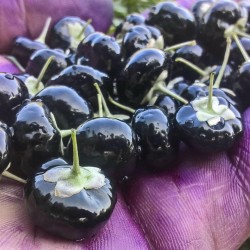Menu
-
MenuBack
- Home
-
Categories
-
-
Categories
-
Vegetable Seeds
-
Varieties by Country
- Varieties from Armenia
- Varieties from BiH
- Varieties from Croatia
- Varieties from France
- Varieties from Germany
- Varieties from Greece
- Varieties from Hungary
- Varieties from India
- Varieties from Italy
- Varieties from Japan
- Varieties from North Macedonia
- Varieties from Peru
- Varieties from Russia
- Varieties from Serbia
- Varieties from Slovenia
- Varieties from Spain
- Varieties from Thailand
- Varieties from Turkey
- Varieties from USA
- Tomato Seeds
- Corn Seeds
- Gourd family
- Bean family
- Cucumber Seeds
- Pepper Seeds
- Carrot family
- Onion family
- Lettuce Seeds
- Potato family
- Cabbage family
- Radish Seeds
- Beetroot family
- Watermelon Seeds
- Melon Seeds
- Cauliflower Seeds
- Sunflower family
-
Varieties by Country
- Fruit Seeds
- Chili - Habanero Seeds
- Medicinal Herb Seeds
- Climbing Plants Seeds
- Trees Bonsai Seeds
- Palm Seeds
- Ornamental Grasses Seeds
- Tobacco Seeds
-
Vegetable Seeds
-
-
-
-
- NEW PRODUCTS
- Create account
- Delivery - Payment
- FAQ
- Home
-
- Vegetable Seeds
- Varieties by Country
- Varieties from North Macedonia
- Varieties from Croatia
- Varieties from Turkey
- Varieties from BiH
- Varieties from Japan
- Varieties from India
- Varieties from Armenia
- Varieties from France
- Varieties from Slovenia
- Varieties from Serbia
- Varieties from Greece
- Varieties from Russia
- Varieties from Italy
- Varieties from Spain
- Varieties from USA
- Varieties from Germany
- Varieties from Peru
- Varieties from Thailand
- Varieties from Hungary
- Cauliflower Seeds
- Melon Seeds
- Watermelon Seeds
- Sunflower family
- Beetroot family
- Radish Seeds
- Tomato Seeds
- Corn Seeds
- Gourd family
- Bean family
- Cucumber Seeds
- Pepper Seeds
- Cabbage family
- Potato family
- Onion family
- Lettuce Seeds
- Carrot family
- Varieties by Country
- Packaging and stuff
- Mushroom Mycelium
- Plant Bulbs
- Organic Spices
- Ayurveda Plants
- F1 Hybrid Seeds
- Banana Seeds
- No PayPal and Card payment X
- Giant Plants Seeds
- Cold-resistant plants
- Bamboo seeds
- Fruit and vegetable molds
- Large Packets of Seeds
- Fruit Seeds
- Chili - Habanero Seeds
- Medicinal Herb Seeds
- Climbing Plants Seeds
- Trees Bonsai Seeds
- Palm Seeds
- Ornamental Grasses Seeds
- Tobacco Seeds
- Delivery - Payment
- Sowing Instructions
- Plants Care
- Water plants seeds
- Cactus Seeds
- Flower Seeds
- Vegetable Seeds
Last Product Reviews
These peppers came all the way from eastern Europe and took a while at no f...
By
 Fitim Berani on 21/09/2023
Fitim Berani on 21/09/2023
Verified Purchase
Last customers
- Tanja, Beograd, Serbia
- Alaa, Alwajh, Saudi Arabia
- ionescu, valu lui traian, Romania
- Lasse, 2900, Norway
- Pete, Cleves, United States
- Stef, Waalwijk, Netherlands
- Sonia, Minervino di Lecce, Italy
- Adrian, Ingolstadt, Germany
- CORINNE, NOTRE DAME DE LONDRES, France
- Dušan, KRAVANY NAD DUNAJOM, Slovakia
- Arno, Ehrenkirchen, Germany
- Costas, LARNACA , Cyprus
- Fulvio francesco, Santa Domenica Talao, Italy
- william, Dun, France
- Aymeric , Saint tricat, France
- Ricard, Sant Celoni, Spain
- Maureen , Enniscorthy Co Wexford , Ireland
- Paul, St. Vigil in Enneberg (BZ), Italy
- Ricardo jorge , Viseu , Portugal
- Radosav, Kragujevac, Serbia
- Sylvie, Neyruz, Switzerland
- Julien, Scionzier, France
- Zoran, Vinca, Serbia
- Josef, Hochdorf-Assenheim, Germany
- Davide, London, United Kingdom
- Kimberly, Victoria, Gozo, Malta
- Saša , Beograd, Serbia
- Ewa, Galway, Ireland
- Ioannis , Kato Achaia, Greece
- Samuele, Milano, Italy
Best sellers
There are 882 products.
Showing 1-12 of 882 item(s)

Best seller product
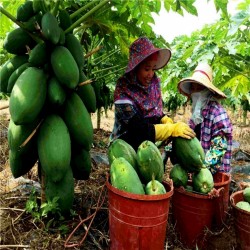
Indian Dwarf Papaya Seeds -...
Price
€3.00
SKU: V 22 M
Seeds Gallery Com,
5/
5
<h2><strong>Indian Dwarf Papaya Seeds - Paw Paw Miniature</strong></h2>
<h2><span style="color: #ff0000;"><strong>Price for Package of 10 or 100 seeds.</strong></span></h2>
<p class=""><strong>Tropical Dwarf Papaya is fast-growing papaya it only reaches 170 cm to 200 cm but bears fruits as large as 1 kg in 6-8 months from seed.</strong></p>
<p>Papaya (Carica papaya L.) - Deliciously sweet with musky undertones and a soft, butter-like consistency, it is no wonder the papaya was reputably called the "fruit of the angels" by Christopher Columbus. Once considered quite exotic, they can now be found in markets throughout the year. Although there is a slight seasonal peak in early summer and fall, papaya trees produce fruit year-round. </p>
<p>Papayas are fruits that remind us of the tropics, the regions of the world in which they are grown. Once considered an exotic fruit, papayas' rise in popularity has made them much more available. Papaya fruits are good sources of Vitamin A, B, and C. </p>
<p>Papayas are spherical or pear-shaped fruits that can be as long as 20 inches. The ones commonly found in the market usually average about 7 inches and weigh about one pound. Their flesh is a rich orange color with either yellow or pink hues. </p>
<p>Papaya has a wonderfully soft, butter-like consistency and a deliciously sweet, musky taste. Inside the inner cavity of the fruit are black, round seeds encased in a gelatinous-like substance. Papaya's seeds are edible, although their peppery flavor is somewhat bitter. </p>
<p>The fruit, as well as the other parts of the papaya tree, contain papain, an enzyme that helps digest proteins. This enzyme is especially concentrated in the fruit when it is unripe. Papain is extracted to make digestive enzyme dietary supplements and is also used as an ingredient in some chewing gums. </p>
<h2><a href="https://www.seeds-gallery.shop/en/home/indian-dwarf-papaya-seeds-paw-paw-miniature.html" target="_blank" title="How To Grow Papaya From Seed" rel="noreferrer noopener"><strong>How To Grow Papaya From Seed</strong></a></h2>
<p>Select a sunny and sheltered place in your garden. That's right, in your garden. Don't start them in pots!</p>
<p>Papayas don't transplant well. Anything that disturbs the roots of papayas really sets them back. They just hate it. The most foolproof way to grow papayas is to simply plant them where they are to live.</p>
<p>Papaya trees are very, very hungry. That means they need very good soil, rich in organic matter and nutrients.</p>
<p>If you don't have fabulous soil, make some. Dig a hole half a meter across and fill it with a mix of good compost and soil. Actually, make at least two or three such planting beds in different locations.</p>
<p>Now sprinkle on some of your seeds. A couple of dozen per bed is a good amount. Cover the seeds lightly with more compost, and then mulch the patch well. The seeds usually take about a couple of weeks to germinate and may take longer.</p>
<p>Soon you will notice that your seedlings are very different in size and vigor. That's why we planted so many. Start culling the weaker ones. Pull them out while still small, or cut bigger ones down to the ground. Only keep the very best.</p>
<p>At this stage, you should keep about half a dozen plants. Papaya plants can be male, female, or bisexual, and you want to make sure that you have some females or bisexual plants amongst your seedlings. The male papayas don't bear fruit.</p>
<p>Papayas start flowering when they are about one meter tall. The male's flower first. Male flowers have long, thin stalks with several small blooms. Female flowers are usually single blooms, bigger, and very close to the trunk. </p>
<p>Cull most of the male plants. You only need one male for every ten to fifteen female plants to ensure good pollination.</p>
<p>And that's it. You should end up with one very strong and healthy female plant per bed. (And a male plant somewhere...) If the weather is warm enough, and if you are growing your papayas in full sun and in good soil, then you could be picking the first ripe fruit within 10 months.</p>
<h3>How much water?</h3>
<p>Papayas have large soft leaves. They evaporate a lot of water in warm weather, so they need a lot of water. But unfortunately, papayas are very susceptible to root rot, especially in cool weather. Overwatering is the most common reason for problems when growing papayas.</p>
<p>It depends on the temperature and on the overall health and vigor of the plant. A healthier plant will cope better, but in general, you should be careful not to overwater during periods of cool weather.</p>
<h3>Growing Papaya In Cooler Climates</h3>
<p>If you get at least long hot summers you could grow papaya just as an ornamental plant. In this case, you would start them in a pot indoors to gain extra time. Plant them out against a sun-facing wall and enjoy the tropical look. However, you won't be able to keep your papaya alive long enough to get fruit.</p>
<p>The only other option is growing papaya in a huge pot, and to keep the pot in a heated greenhouse in winter. You may also grow papaya as an annual decorative plant.</p>
<div>
<table cellspacing="0" cellpadding="0" border="1">
<tbody>
<tr>
<td colspan="2" width="100%" valign="top">
<p><span style="color: #008000;"><strong>Sowing Instructions</strong></span></p>
</td>
</tr>
<tr>
<td valign="top" nowrap="nowrap">
<p><span style="color: #008000;"><strong>Propagation:</strong></span></p>
</td>
<td valign="top">
<p><span style="color: #008000;">Seeds / Cuttings</span></p>
</td>
</tr>
<tr>
<td valign="top" nowrap="nowrap">
<p><span style="color: #008000;"><strong>Pretreat:</strong></span></p>
</td>
<td valign="top">
<p><span style="color: #008000;">0</span></p>
</td>
</tr>
<tr>
<td valign="top" nowrap="nowrap">
<p><span style="color: #008000;"><strong>Stratification:</strong></span></p>
</td>
<td valign="top">
<p><span style="color: #008000;">0</span></p>
</td>
</tr>
<tr>
<td valign="top" nowrap="nowrap">
<p><span style="color: #008000;"><strong>Sowing Time:</strong></span></p>
</td>
<td valign="top">
<p><span style="color: #008000;">all year round</span></p>
</td>
</tr>
<tr>
<td valign="top" nowrap="nowrap">
<p><span style="color: #008000;"><strong>Sowing Depth:</strong></span></p>
</td>
<td valign="top">
<p><span style="color: #008000;">0.5 cm</span></p>
</td>
</tr>
<tr>
<td valign="top" nowrap="nowrap">
<p><span style="color: #008000;"><strong>Sowing Mix:</strong></span></p>
</td>
<td valign="top">
<p><span style="color: #008000;">Coir or sowing mix + sand or perlite</span></p>
</td>
</tr>
<tr>
<td valign="top" nowrap="nowrap">
<p><span style="color: #008000;"><strong>Germination temperature:</strong></span></p>
</td>
<td valign="top">
<p><span style="color: #008000;">about 25-28 ° C</span></p>
</td>
</tr>
<tr>
<td valign="top" nowrap="nowrap">
<p><span style="color: #008000;"><strong>Location:</strong></span></p>
</td>
<td valign="top">
<p><span style="color: #008000;">bright + keep constantly moist not wet</span></p>
</td>
</tr>
<tr>
<td valign="top" nowrap="nowrap">
<p><span style="color: #008000;"><strong>Germination Time:</strong></span></p>
</td>
<td valign="top">
<p><span style="color: #008000;">2-4 Weeks</span></p>
</td>
</tr>
<tr>
<td valign="top" nowrap="nowrap">
<p><span style="color: #008000;"><strong>Watering:</strong></span></p>
</td>
<td valign="top">
<p><span style="color: #008000;">regular watering during the growth period + dry between waterings</span></p>
</td>
</tr>
<tr>
<td valign="top" nowrap="nowrap">
<p><span style="color: #008000;"><strong> </strong></span></p>
</td>
<td valign="top">
<p><br><span style="color: #008000;"><em>Copyright © 2012 Seeds Gallery - Saatgut Galerie - Galerija semena. All Rights Reserved.</em></span></p>
</td>
</tr>
</tbody>
</table>
</div>
V 22 M


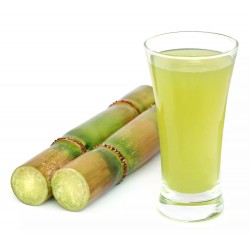
Sugarcane or Sugar Cane...
Price
€3.50
SKU: MHS 11
Seeds Gallery Com,
5/
5
<h2><strong>Sugarcane or Sugar Cane Seeds (Saccharum officinarum)</strong></h2>
<h2><span style="color:#ff0000;"><strong>Price for Package of 10 seeds.</strong></span></h2>
<p>Sugarcane, or sugar cane, is one (Saccharum officinarum) of the several species of tall perennial true grasses of the genus Saccharum, tribe Andropogoneae, native to the warm temperate to tropical regions of South Asia and Melanesia, and used for sugar production. It has stout, jointed, fibrous stalks that are rich in the sugar sucrose, which accumulates in the stalk internodes. The plant is 2 to 6 m (6 ft 7 in to 19 ft 8 in) tall. All sugar cane species interbreed and the major commercial cultivars are complex hybrids. Sugarcane belongs to the grass family Poaceae, an economically important seed plant family that includes maize, wheat, rice, and sorghum, and many forage crops.</p>
<p>Sucrose, extracted and purified in specialized mill factories, is used as raw material in human food industries or is fermented to produce ethanol. Ethanol is produced on a large scale by the Brazilian sugarcane industry. Sugarcane is the world's largest crop by production quantity.[1] In 2012, The Food and Agriculture Organization estimates it was cultivated on about 26×106 hectares (6.4×107 acres), in more than 90 countries, with a worldwide harvest of 1.83×109 tonnes (1.80×109 long tons; 2.02×109 short tons). Brazil was the largest producer of sugar cane in the world. The next five major producers, in decreasing amounts of production, were India, China, Thailand, Pakistan, and Mexico.</p>
<p>The world demand for sugar is the primary driver of sugarcane agriculture. Cane accounts for 80% of sugar produced; most of the rest is made from sugar beets. Sugarcane predominantly grows in the tropical and subtropical regions (sugar beets grow in colder temperate regions). Other than sugar, products derived from sugarcane include falernum, molasses, rum, cachaça (a traditional spirit from Brazil), bagasse, and ethanol. In some regions, people use sugarcane reeds to make pens, mats, screens, and thatch. The young, unexpanded inflorescence of tebu telor is eaten raw, steamed, or toasted, and prepared in various ways in certain island communities of Indonesia.</p>
<p>The Persians, followed by the Greeks, discovered the famous "reeds that produce honey without bees" in India between the 6th and 4th centuries BC. They adopted and then spread sugarcane agriculture.[3] Merchants began to trade in sugar from India, which was considered a luxury and an expensive spice. In the 18th century AD, sugarcane plantations began in Caribbean, South American, Indian Ocean and Pacific island nations and the need for laborers became a major driver of large human migrations, including slave labor[4] and indentured servants.</p>
<p> </p>
<p><strong>Description</strong></p>
<p>Sugarcane is a tropical, perennial grass that forms lateral shoots at the base to produce multiple stems, typically three to four m (10 to 13 ft) high and about 5 cm (2 in) in diameter. The stems grow into cane stalk, which when mature constitutes around 75% of the entire plant. A mature stalk is typically composed of 11–16% fiber, 12–16% soluble sugars, 2–3% nonsugars, and 63–73% water. A sugarcane crop is sensitive to the climate, soil type, irrigation, fertilizers, insects, disease control, varieties, and the harvest period. The average yield of cane stalk is 60–70 tonnes per hectare (24–28 long ton/acre; 27–31 short ton/acre) per year. However, this figure can vary between 30 and 180 tonnes per hectare depending on knowledge and crop management approach used in sugarcane cultivation. Sugarcane is a cash crop, but it is also used as livestock fodder.</p>
<p> </p>
<p><strong>History</strong></p>
<p>Sugarcane is indigenous to tropical South and Southeast Asia.[8] Different species likely originated in different locations, with Saccharum barberi originating in India and S. edule and S. officinarum in New Guinea.[8] It is theorized that sugarcane was first domesticated as a crop in New Guinea around 6000 BC.[9] New Guinean farmers and other early cultivators of sugarcane chewed the plant for its sweet juice. Early farmers in Southeast Asia, and elsewhere, may have also boiled the cane juice down to a viscous mass to facilitate transportation, but the earliest known production of crystalline sugar began in northern India. The exact date of the first cane sugar production is unclear. The earliest evidence of sugar production comes from ancient Sanskrit and Pali texts.[10]</p>
<p>Around the 8th century, Arab traders introduced sugar from South Asia to the other parts of the Abbasid Caliphate in the Mediterranean, Mesopotamia, Egypt, North Africa, and Andalusia. By the 10th century, sources state that no village in Mesopotamia did not grow sugarcane.[7] It was among the early crops brought to the Americas by the Spanish, mainly Andalusians, from their fields in the Canary Islands, and the Portuguese from their fields in the Madeira Islands.</p>
<p>Christopher Columbus first brought sugarcane to the Caribbean during his second voyage to the Americas; initially to the island of Hispaniola (modern day Haiti and the Dominican Republic). In colonial times, sugar formed one side of the triangle trade of New World raw materials, along with European manufactured goods, and African slaves. Sugar (often in the form of molasses) was shipped from the Caribbean to Europe or New England, where it was used to make rum. The profits from the sale of sugar were then used to purchase manufactured goods, which were then shipped to West Africa, where they were bartered for slaves. The slaves were then brought back to the Caribbean to be sold to sugar planters. The profits from the sale of the slaves were then used to buy more sugar, which was shipped to Europe.</p>
<p>France found its sugarcane islands so valuable that it effectively traded its portion of Canada, famously dubbed "a few acres of snow", to Britain for their return of Guadeloupe, Martinique and St. Lucia at the end of the Seven Years' War. The Dutch similarly kept Suriname, a sugar colony in South America, instead of seeking the return of the New Netherlands (New York).</p>
<p>Boiling houses in the 17th through 19th centuries converted sugarcane juice into raw sugar. These houses were attached to sugar plantations in the Western colonies. Slaves often ran the boiling process under very poor conditions. Rectangular boxes of brick or stone served as furnaces, with an opening at the bottom to stoke the fire and remove ashes. At the top of each furnace were up to seven copper kettles or boilers, each one smaller and hotter than the previous one. The cane juice began in the largest kettle. The juice was then heated and lime added to remove impurities. The juice was skimmed and then channeled to successively smaller kettles. The last kettle, the "teache", was where the cane juice became syrup. The next step was a cooling trough, where the sugar crystals hardened around a sticky core of molasses. This raw sugar was then shoveled from the cooling trough into hogsheads (wooden barrels), and from there into the curing house.</p>
<p>In the British Empire, slaves were liberated after 1833 and many would no longer work on sugarcane plantations when they had a choice. British owners of sugarcane plantations therefore needed new workers, and they found cheap labour in China, Portugal and India.[11][12] The people were subject to indenture, a long-established form of contract which bound them to forced labour for a fixed term; apart from the fixed term of servitude, this resembled slavery.[13] The first ships carrying indentured labourers from India left in 1836.[14] The migrations to serve sugarcane plantations led to a significant number of ethnic Indians, southeast Asians and Chinese settling in various parts of the world.[15] In some islands and countries, the South Asian migrants now constitute between 10 to 50 percent of the population. Sugarcane plantations and Asian ethnic groups continue to thrive in countries such as Fiji, Natal, Burma, Sri Lanka, Malaysia, British Guiana, Jamaica, Trinidad, Martinique, French Guiana, Guadeloupe, Grenada, St. Lucia, St. Vincent, St. Kitts, St. Croix, Suriname, Nevis, and Mauritius.</p>
<p>The then British colony of Queensland, now a state of Australia, imported between 55,000 and 62,500 (estimates vary) people from the South Pacific Islands to work on sugarcane plantations between 1863 and 1900.</p>
<p>Cuban sugar derived from sugarcane was exported to the USSR, where it received price supports and was ensured a guaranteed market. The 1991 dissolution of the Soviet state forced the closure of most of Cuba's sugar industry.</p>
<p>Sugarcane remains an important part of the economy of Guyana, Belize, Barbados, and Haiti, along with the Dominican Republic, Guadeloupe, Jamaica, and other islands.</p>
<p>About 70% of the sugar produced globally comes from S. officinarum and hybrids using this species.</p>
<h2>Cultivation</h2>
<p>Sugarcane cultivation requires a tropical or temperate climate, with a minimum of 60 cm (24 in) of annual moisture. It is one of the most efficient photosynthesizers in the plant kingdom. It is a C4 plant, able to convert up to 1% of incident solar energy into biomass.[19] In prime growing regions, such as Mauritius, Dominican Republic, Puerto Rico, India, Guyana, Indonesia, Pakistan, Peru, Brazil, Bolivia, Colombia, Australia, Ecuador, Cuba, the Philippines, El Salvador, Jamaica, and Hawaii, sugarcane crops can produce over 15 kg/m2 of cane. Once a major crop of the southeastern region of the United States, sugarcane cultivation has declined there in recent decades, and is now primarily confined to Florida and Louisiana.</p>
<p>Sugarcane is cultivated in the tropics and subtropics in areas with a plentiful supply of water, for a continuous period of more than 6-7 months each year, either from natural rainfall or through irrigation. The crop does not tolerate severe frosts. Therefore, most of the world's sugarcane is grown between 22°N and 22°S, and some up to 33°N and 33°S.[20] When sugarcane crop is found outside this range, such as the Natal region of South Africa, it is normally due to anomalous climatic conditions in the region, such as warm ocean currents that sweep down the coast. In terms of altitude, sugarcane crop is found up to 1,600 m close to the equator in countries such as Colombia, Ecuador, and Peru.</p>
<p>Sugarcane can be grown on many soils ranging from highly fertile well-drained mollisols, through heavy cracking vertisols, infertile acid oxisols, peaty histosols, to rocky andisols. Both plentiful sunshine and water supplies increase cane production. This has made desert countries with good irrigation facilities such as Egypt some of the highest-yielding sugarcane-cultivating regions.</p>
<p>Although sugarcanes produce seeds, modern stem cutting has become the most common reproduction method. Each cutting must contain at least one bud, and the cuttings are sometimes hand-planted. In more technologically advanced countries like the United States and Australia, billet planting is common. Billets harvested from a mechanical harvester are planted by a machine that opens and recloses the ground. Once planted, a stand can be harvested several times; after each harvest, the cane sends up new stalks, called ratoons. Successive harvests give decreasing yields, eventually justifying replanting. Two to 10 harvests are usually made depending on the type of culture. In a country with a mechanical agriculture looking for a high production of large fields, like in North America, sugar canes are replanted after two or three harvests to avoid a lowering in yields. In countries with a more traditional type of agriculture with smaller fields and hand harvesting, like in the French island la Réunion, sugar canes are often harvested up to 10 years before replanting.</p>
<p>Sugarcane is harvested by hand and mechanically. Hand harvesting accounts for more than half of production, and is dominant in the developing world. In hand harvesting, the field is first set on fire. The fire burns dry leaves, and chases away or kills any lurking venomous snakes, without harming the stalks and roots. Harvesters then cut the cane just above ground-level using cane knives or machetes. A skilled harvester can cut 500 kg (1,100 lb) of sugarcane per hour.</p>
<p>Mechanical harvesting uses a combine, or sugarcane harvester.[22] The Austoft 7000 series, the original modern harvester design, has now been copied by other companies, including Cameco / John Deere. The machine cuts the cane at the base of the stalk, strips the leaves, chops the cane into consistent lengths and deposits it into a transporter following alongside. The harvester then blows the trash back onto the field. Such machines can harvest 100 long tons (100 t) each hour; however, harvested cane must be rapidly processed. Once cut, sugarcane begins to lose its sugar content, and damage to the cane during mechanical harvesting accelerates this decline. This decline is offset because a modern chopper harvester can complete the harvest faster and more efficiently than hand cutting and loading. Austoft also developed a series of hydraulic high-lift infield transporters to work alongside their harvesters to allow even more rapid transfer of cane to, for example, the nearest railway siding. This mechanical harvesting doesn't require the field to be set on fire; the remains left in the field by the machine consist of the top of the sugar cane and the dead leaves, which act as mulch for the next round of planting.</p>
<p> </p>
<p><strong>Pests</strong></p>
<p>The cane beetle (also known as cane grub) can substantially reduce crop yield by eating roots; it can be controlled with imidacloprid (Confidor) or chlorpyrifos (Lorsban). Other important pests are the larvae of some butterfly/moth species, including the turnip moth, the sugarcane borer (Diatraea saccharalis), the Mexican rice borer (Eoreuma loftini); leaf-cutting ants, termites, spittlebugs (especially Mahanarva fimbriolata and Deois flavopicta), and the beetle Migdolus fryanus. The planthopper insect Eumetopina flavipes acts as a virus vector, which causes the sugarcane disease ramu stunt.</p>
<p> </p>
<p><strong>Pathogens</strong></p>
<p>Numerous pathogens infect sugarcane, such as sugarcane grassy shoot disease caused by Phytoplasma, whiptail disease or sugarcane smut, pokkah boeng caused by Fusarium moniliforme, Xanthomonas axonopodis bacteria causes Gumming Disease, and red rot disease caused by Colletotrichum falcatum. Viral diseases affecting sugarcane include sugarcane mosaic virus, maize streak virus, and sugarcane yellow leaf virus.</p>
<p> </p>
<p><strong>Nitrogen fixation</strong></p>
<p>Some sugarcane varieties are capable of fixing atmospheric nitrogen in association with the bacterium Glucoacetobacter diazotrophicus.[24] Unlike legumes and other nitrogen-fixing plants that form root nodules in the soil in association with bacteria, G. diazotrophicus lives within the intercellular spaces of the sugarcane's stem.[25][26] Coating seeds with the bacteria is a newly developed technology that can enable every crop species to fix nitrogen for its own use.</p>
<p> </p>
<p><strong>Conditions for sugarcane workers</strong></p>
<p>At least 20,000 people are estimated to have died of chronic kidney disease (CKD) in Central America in the past two decades – most of them sugar cane workers along the Pacific coast. This may be due to working long hours in the heat without adequate fluid intake.</p>
<p> </p>
<p><strong>Processing</strong></p>
<p>Traditionally, sugarcane processing requires two stages. Mills extract raw sugar from freshly harvested cane and "mill-white” sugar is sometimes produced immediately after the first stage at sugar-extraction mills, intended for local consumption. Sugar crystals appear naturally in white color during the crystallization process. Sulfur dioxide is added to inhibit the formation of color-inducing molecules as well as to stabilize the sugar juices during evaporation.[29][30] Refineries, often located nearer to consumers in North America, Europe, and Japan, then produce refined white sugar, which is 99 percent sucrose. These two stages are slowly merging. Increasing affluence in the sugar-producing tropics increased demand for refined sugar products, driving a trend toward combined milling and refining.</p>
<p> </p>
<p><strong>Sugarcane as food</strong></p>
<p>In most countries where sugarcane is cultivated, there are several foods and popular dishes derived directly from it, such as:</p>
<p>Raw sugarcane: chewed to extract the juice</p>
<p>Sayur nganten: an Indonesian soup made with the stem of trubuk (Saccharum edule), a type of sugarcane.</p>
<p>Sugarcane juice: a combination of fresh juice, extracted by hand or small mills, with a touch of lemon and ice to make a popular drink, known variously as air tebu, usacha rass, guarab, guarapa, guarapo, papelón, aseer asab, ganna sharbat, mosto, caldo de cana, nước miá.</p>
<p>Syrup: a traditional sweetener in soft drinks, now largely supplanted in the US by high fructose corn syrup, which is less expensive because of corn subsidies and sugar tariffs.[47]</p>
<p>Molasses: used as a sweetener and a syrup accompanying other foods, such as cheese or cookies</p>
<p>Jaggery: a solidified molasses, known as gur or gud or gul in India, is traditionally produced by evaporating juice to make a thick sludge, and then cooling and molding it in buckets. Modern production partially freeze dries the juice to reduce caramelization and lighten its color. It is used as sweetener in cooking traditional entrees, sweets and desserts.</p>
<p>Falernum: a sweet, and lightly alcoholic drink made from sugarcane juice</p>
<p>Cachaça: the most popular distilled alcoholic beverage in Brazil; a liquor made of the distillation of sugarcane juice.</p>
<p>Rum: is a liquor made from sugarcane products, typically molasses but sometimes also cane juice. It is most commonly produced in the Caribbean and environs.</p>
<p>Basi: is a fermented alcoholic beverage made from sugarcane juice produced in the Philippines and Guyana.</p>
<p>Panela: solid pieces of sucrose and fructose obtained from the boiling and evaporation of sugarcane juice; a food staple in Colombia and other countries in South and Central America</p>
<p>Rapadura: a sweet flour that is one of the simplest refinings of sugarcane juice, common in Latin American countries such as Brazil, Argentina and Venezuela (where it is known as papelón) and the Caribbean.</p>
<p>Rock candy: crystallized cane juice</p>
<p>Gâteau de Sirop</p>
MHS 11 (10 S)

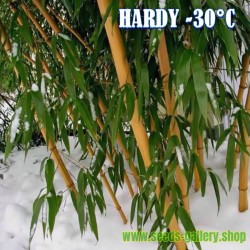
Madake, Giant Timber Bamboo...
Price
€1.95
SKU: B 6
Seeds Gallery Com,
5/
5
<!DOCTYPE html>
<html>
<head>
<meta http-equiv="Content-Type" content="text/html; charset=UTF-8" />
</head>
<body>
<h2><strong>Madake, Giant Timber Bamboo Seeds (Phyllostachys bambusoides)</strong></h2>
<h2><span style="color: #ff0000;"><strong>Price for Package of 5 seeds.</strong></span></h2>
<p>Phyllostachys bambusoides, commonly called madake, giant timber bamboo or Japanese timber bamboo, is a bamboo species in the genus Phyllostachys.</p>
<p>Madake is typically known for being the most common type of bamboo used in the making of shakuhachi flutes and is utilized in numerous Japanese, as well as Chinese, arts, and crafts.</p>
<p>Phyllostachys bambusoides can reach a height of 15–22 m and a diameter of 10–15 cm. The culms are dark green, quite thick and very straight. The leaves are dark green. New stalks emerge in late spring and grow quite rapidly, up to 1 meter each day. The flowering interval of this species is very long, about 120 years. This strong plant is in Asia one of the preferred bamboos for building and in the manufacture of furniture.</p>
<p>This species is native to China, but it is commonly grown worldwide, especially in Japan.</p>
</body>
</html>
B 6 (5 S)

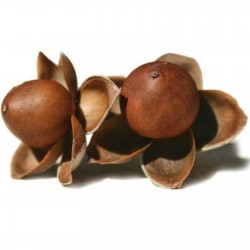
Hawaiian Baby Woodrose...
Price
€2.35
SKU: T 25 (1g)
Seeds Gallery Com,
5/
5
<h2><strong>Hawaiian Baby Woodrose Seeds (Argyreia nervosa)</strong></h2>
<h2><span style="color: #ff0000;" class=""><strong>Price for Package of 1g (+-10) seeds.</strong></span></h2>
<p>Argyreia nervosa is a perennial climbing vine that is native to the Indian subcontinent and introduced to numerous areas worldwide, including Hawaii, Africa, and the Caribbean. Though it can be invasive, it is often prized for its aesthetic value. Common names include Hawaiian Baby Woodrose, Adhoguda अधोगुडा or Vidhara विधारा (Sanskrit), Elephant Creeper and Woolly Morning Glory. There are two botanical varieties: Argyreia nervosavar. nervosa described here, and Argyrea nervosa var. speciosa, a species used in ayurvedic medicine, but with little to no psychoactive value.</p>
<p>Hawaiian Baby Woodrose seeds may be consumed for their various ergoline alkaloids, such as Lysergic acid amide, which can produce psychedelic effects.</p>
<p><strong>History</strong></p>
<p>The plant is a rare example of a plant whose hallucinogenic properties were not recognized until recent times. While its cousins in the Convolvulaceae family, such as the Rivea corymbosa (Ololiuhqui) and Ipomoea tricolor (Tlitliltzin), were used in shamanic rituals of Latin America for centuries, the Hawaiian Baby Woodrose was not traditionally recognized as a hallucinogen. Its properties were first brought to attention in the 1960s, despite the fact that the chemical composition of its seeds is nearly identical to those of the two species mentioned above, and the seeds contain the highest concentration of psychoactive compounds in the entire family.</p>
<p><strong>Seeds</strong></p>
<p>In most countries, it is legal to purchase, sell or germinate Argyreia nervosa seeds, but they are generally unapproved for human consumption. Depending on the country, it may be illegal to buy seeds with the intention to consume them, and several countries have outlawed ergine-containing seeds altogether. In Australia, retailers are required to treat their seeds with chemicals to discourage consumption, and it is illegal to buy or possess untreated seeds.</p>
<p><strong>Extracted chemicals</strong></p>
<p>Extracting ergine from Argyreia speciosa seeds is illegal in the USA since it is a scheduled substance. It is classified as a schedule III depressant by the DEA, although the substance has hallucinogenic/psychedelic properties.</p>
<p>Extracts</p>
<p>In an animal model of ulcers in rats, large doses of the extract of Argyreia speciosa leaves (50, 100 and 200 mg/kg body weight) showed dose-dependent antiulcer activity and cured the Ulcers.</p><script src="//cdn.public.n1ed.com/G3OMDFLT/widgets.js"></script>
T 25 (1g)

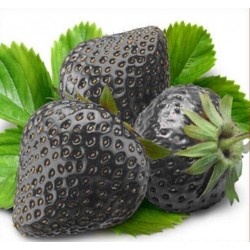
Black Strawberry Seeds -...
Price
€2.25
SKU: V 1
Seeds Gallery Com,
5/
5
<h2>Black Strawberry Seeds - Exotic Rare</h2>
<h2><span style="color:#ff0000;">Price for Package of 10 seeds.</span></h2>
<p><strong style="color:#ff0000;font-size:18px;"></strong>A lovely Black Strawberry that is fully hardy. Perfect for small spaces or containers, it will produce an abundance of small sweet fruit, with a hint of pineapple.</p>
<p>Heavy cropping and easy to grow.</p>
<p>Perennial herb densely clustered with straighter branches.15-25cm in height. Cymose anthotaxy with juicy flesh. Require loosing and weeding at intervals on the loose fertile soil with ample organic fertilizers. Favor to warm and need moisture to live through the winter.</p>
<div>
<div>
<table cellspacing="0" cellpadding="0" border="1"><tbody><tr><td colspan="2" width="100%" valign="top">
<h3 align="center"><span style="color:#008000;"><strong>Sowing Instructions</strong></span></h3>
</td>
</tr><tr><td valign="top" nowrap="nowrap">
<p align="center"><span style="color:#008000;"><strong>Propagation:</strong></span></p>
</td>
<td valign="top">
<p align="center"><span style="color:#008000;">Seeds</span></p>
</td>
</tr><tr><td valign="top" nowrap="nowrap">
<p align="center"><span style="color:#008000;"><strong>Pretreat:</strong></span></p>
</td>
<td valign="top">
<p align="center"><span style="color:#008000;">0</span></p>
</td>
</tr><tr><td valign="top" nowrap="nowrap">
<p align="center"><span style="color:#008000;"><strong>Stratification:</strong></span></p>
</td>
<td valign="top">
<p align="center"><span style="color:#008000;">0</span></p>
</td>
</tr><tr><td valign="top" nowrap="nowrap">
<p align="center"><span style="color:#008000;"><strong>Sowing Time:</strong></span></p>
</td>
<td valign="top">
<p align="center"><span style="color:#008000;">all year round</span></p>
</td>
</tr><tr><td valign="top" nowrap="nowrap">
<p align="center"><span style="color:#008000;"><strong>Sowing Depth:</strong></span></p>
</td>
<td valign="top">
<p align="center"><span style="color:#008000;">Needs Light to germinate! Just sprinkle on the surface of the substrate + gently press</span></p>
</td>
</tr><tr><td valign="top" nowrap="nowrap">
<p align="center"><span style="color:#008000;"><strong>Sowing Mix:</strong></span></p>
</td>
<td valign="top">
<p align="center"><span style="color:#008000;">Coir or sowing mix + sand or perlite</span></p>
</td>
</tr><tr><td valign="top" nowrap="nowrap">
<p align="center"><span style="color:#008000;"><strong>Germination temperature:</strong></span></p>
</td>
<td valign="top">
<p align="center"><span style="color:#008000;">20-25°C</span></p>
</td>
</tr><tr><td valign="top" nowrap="nowrap">
<p align="center"><span style="color:#008000;"><strong>Location:</strong></span></p>
</td>
<td valign="top">
<p align="center"><span style="color:#008000;">bright + keep constantly moist not wet</span></p>
</td>
</tr><tr><td valign="top" nowrap="nowrap">
<p align="center"><span style="color:#008000;"><strong>Germination Time:</strong></span></p>
</td>
<td valign="top">
<p align="center"><span style="color:#008000;">1 - 8 weeks</span></p>
</td>
</tr><tr><td valign="top" nowrap="nowrap">
<p align="center"><span style="color:#008000;"><strong>Watering:</strong></span></p>
</td>
<td valign="top">
<p align="center"><span style="color:#008000;">Water regularly during the growing season</span></p>
</td>
</tr><tr><td valign="top" nowrap="nowrap"> </td>
<td valign="top">
<p align="center"><br /><span style="color:#008000;"><em>Copyright © 2012 Seeds Gallery - Saatgut Galerie - Galerija semena. </em><em>All Rights Reserved.</em></span></p>
</td>
</tr></tbody></table><p> </p>
</div>
</div>
V 1


This plant has giant fruits


Giant Water Lily Lotus...
Price
€2.25
SKU: F 78
Seeds Gallery Com,
5/
5
<!DOCTYPE html>
<html>
<head>
<meta http-equiv="Content-Type" content="text/html; charset=UTF-8" />
</head>
<body>
<h2><span style="font-size: 14pt;"><strong>Giant Water Lily Lotus Seeds (Victoria amazonica)</strong></span></h2>
<h2><span style="color: #fd0606; font-size: 14pt;"><strong>Price for Package of 1 seeds.</strong></span></h2>
<p><span>Queen of the water lilies, this Amazonian giant has a remarkable life cycle.</span></p>
<p><span>Victoria Amazonica is well known for its huge circular leaves, which are often pictured with a small child sitting supported in the centre as a demonstration of their size and strength. The species is highly prized as an ornamental, despite having somewhat particular requirements for successful cultivation.</span></p>
<p><span>Victoria Amazonica seeds from Thailand that have a perfectly can grow every weather that have a very big size most 3.5 metre. The seeds very fresh easy for grow the most quality 85%. Every seeds had quality cue in with thoroughly.</span></p>
<h2><span>How To Grow Victoria amazonica Seeds</span></h2>
<p><span>Put the seeds in to washtub and wait 5 weeks.</span></p>
<p><span>When the roots thrown out and flowers thrive then after that put the underground and wait for until the lotus grow up.</span></p>
<h2><strong><span>WIKIPEDIA:</span></strong></h2>
<p><span>Victoria amazonica is a species of flowering plant, the largest of the Nymphaeaceae family of water lilies. It is the National flower of Guyana.</span></p>
<p><span>The species has very large leaves, up to 3 m in diameter, that float on the water's surface on a submerged stalk, 7–8 m in length. The species was once called Victoria regia after Queen Victoria, but the name was superseded. V. amazonica is native to the shallow waters of the Amazon River basin, such as oxbow lakes and bayous. It is depicted in the Guyanese coat of arms. The flowers are white the first night they are open and become pink the second night. They are up to 40 cm in diameter, and are pollinated by beetles. This process was described in detail by Sir Ghillean Prance and Jorge Arius.[4][5]It is the largest waterlily in the world.</span></p>
<p><strong><span>Classification</span></strong></p>
<p><span>A member of the genus Victoria placed in the Nymphaeaceae family or, sometimes, in the Euryalaceae.[6] The first published description of the genus was by John Lindley in October 1837, based on specimens of this plant returned from British Guiana by Robert Schomburgk. Lindley named the genus after the newly ascended Queen Victoria, and the species Victoria regia.[1] The spelling in Schomburgk's description in Athenaeum, published the month before, was given as Victoria Regina.[2] Despite this spelling being adopted by the Botanical Society of London for their new emblem, Lindley's was the version used throughout the nineteenth century.</span></p>
<p><span>An earlier account of the species, Euryale amazonica by Eduard Friedrich Poeppig, in 1832 described an affinity with Euryale ferox. A collection and description was also made by the French botanist Aimé Bonpland in 1825.[1][1][8] In 1850 James De Carle Sowerby[9] recognised Poeppig's earlier description and transferred its epithet amazonica. The new name was rejected by Lindley. The current name, Victoria amazonica, did not come into widespread use until the twentieth century.</span></p>
<p><strong><span>History</span></strong></p>
<p><span>Victoria regia, as it was named, was discovered by Tadeáš Haenke in 1801.[10] It was once the subject of rivalry between Victorian gardeners in England. Always on the look out for a spectacular new species with which to impress their peers, Victorian "Gardeners"[11] such as the Duke of Devonshire, and the Duke of Northumberland started a well-mannered competition to become the first to cultivate and bring to flower this enormous lily. In the end, the two aforementioned Dukes became the first to achieve this, Joseph Paxton (for the Duke of Devonshire) being the first in November 1849 by replicating the lily's warm swampy habitat (not easy in winter in England with only coal-fired boilers for heating), and a "Mr Ivison" the second and more constantly successful (for Northumberland) at Syon House.</span></p>
<p><span>The species captured the imagination of the public, and was the subject of several dedicated monographs. The botanical illustrations of cultivated specimens in Fitch and W.J. Hooker's 1851 work Victoria Regia[12] received critical acclaim in the Athenaeum, "they are accurate, and they are beautiful".[13] The Duke of Devonshire presented Queen Victoria with one of the first of these flowers, and named it in her honour. The lily, with ribbed undersurface and leaves veining "like transverse girders and supports", was Paxton's inspiration for The Crystal Palace, a building four times the size of St. Peter's in Rome.</span></p>
<h2><strong>Video:</strong></h2>
<h2><strong><span style="color: #fc0303;"><a href="https://www.youtube.com/watch?v=CkI9-rhumbs" target="_blank" class="btn btn-default" rel="noreferrer noopener"><span style="color: #fc0303;">How To Grow Lotus From Seeds </span></a></span><br /></strong></h2>
</body>
</html>
F 78

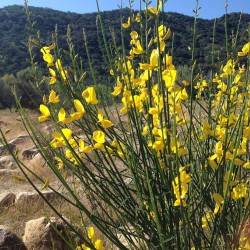
Spanish broom Seeds...
Price
€1.75
SKU: T 85
Seeds Gallery Com,
5/
5
<meta http-equiv="Content-Type" content="text/html; charset=UTF-8" />
<h2><strong>Spanish broom Seeds (Spartium junceum)</strong></h2>
<h2><span style="color: #ff0000;"><strong>Price for Package of 10 seeds.</strong></span></h2>
<p>Spartium junceum, the Spanish broom, rush broom, or weaver's broom, is a species of flowering plant in the family Fabaceae.</p>
<p>It is the sole species in the genus Spartium, but is closely related to the other brooms in the genera Cytisus and Genista. There are many binomials in Spartium that are of dubious validity (see below).</p>
<p>The Latin specific epithet junceum means "rush-like", referring to the shoots, which show a passing resemblance to those of the rush genus Juncus.</p>
<p>Distribution and habitat<br />This species is native to the Mediterranean in southern Europe, southwest Asia, and northwest Africa, where it is found in sunny sites, usually on dry, sandy soils.</p>
<p>Description<br />S. junceum is a vigorous, deciduous shrub growing to 2–4 m (7–13 ft) tall, rarely 5 m (16 ft), with main stems up to 5 cm (2 in) thick, rarely 10 cm (4 in). It has thick, somewhat succulent grey-green rush-like shoots with very sparse small deciduous leaves 1 to 3 cm long and up to 4 mm broad. The leaves are of little importance to the plant, with much of the photosynthesis occurring in the green shoots (a water-conserving strategy in its dry climate). The leaves fall away early.[9] In late spring and summer shoots are covered in profuse fragrant yellow pea-like flowers 1 to 2 cm across. In late summer, the legumes (seed pods) mature black and reach 8–10 cm (3–4 in) long. They burst open, often with an audible crack, spreading seed from the parent plant.</p>
<p>Invasive species<br />Spartium junceum has been widely introduced into other areas and is regarded as a noxious invasive species in places with a Mediterranean climate such as California and Oregon, Hawaii, central Chile, southeastern Australia, the Western Cape in South Africa and the Canary Islands and Azores. It was first introduced to California as an ornamental plant.</p>
<p><strong>Uses</strong><br />The plant is used as an ornamental plant in gardens and in landscape plantings. It has gained the Royal Horticultural Society's Award of Garden Merit.</p>
<p>In Bolivia and Peru, the plant is known as retama, (not to be confused with the genus Retama), and has become very well established in some areas. It is one of the most common ornamental plants, often seen growing along sidewalks in La Paz.</p>
<p>Retama has made its way into the ethnobotany of the indigenous Aymara and Quechua cultures.</p>
<p>The plant is also used as a flavoring, and for its essential oil, known as genetic absolute. Its fibers have been used for cloth and it produces a yellow dye.</p>
T 85 (10 S)

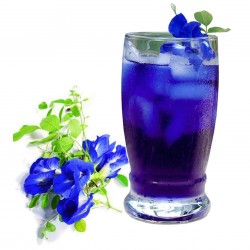
Butterfly Pea, Blue Pea...
Price
€2.65
SKU: VE 121
Seeds Gallery Com,
5/
5
<h2 class=""><strong>Butterfly Pea, Blue Pea Vine Seeds (Clitoria ternatea)</strong></h2>
<h2><span style="color: #ff0000;"><strong>Price for Package of 5 seeds.</strong></span></h2>
<p>Clitoria ternatea, commonly known as Asian pigeonwings, bluebellvine, blue pea, butterfly pea, cordofan pea and Darwin pea, is a plant species belonging to the Fabaceae family. The flowers of this vine have the shape of human female genitals, hence the Latin name of the genus "Clitoria", from "clitoris". (Synonyms: Clitoris principissae.)</p>
<p>This plant is native to tropical equatorial Asia (Indonesia and Malaysia), but has been introduced to Africa, Australia and America.</p>
<p>It is a perennial herbaceous plant, with elliptic, obtuse leaves. It grows as a vine or creeper, doing well in moist, neutral soil. The most striking feature about this plant is the color of its flowers, a vivid deep blue; solitary, with light yellow markings. They are about 4 cm (1.6 in) long by 3 cm (1.2 in) wide. Some varieties yield white flowers.</p>
<p>The fruits are 5–7 cm (2.0–2.8 in) long, flat pods with six to ten seeds in each pod. They are edible when tender.</p>
<p>It is grown as an ornamental plant and as a revegetation species (e.g., in coal mines in Australia), requiring little care when cultivated. As a legume, its roots form a symbiotic association with soil bacteria known as rhizobia, which transform atmospheric N2 into a plant-usable form, therefore, this plant is also used to improve soil quality through the decomposition of nitrogen rich plant material.</p>
<h2><strong><em>Uses</em></strong></h2>
<h2><strong>Food</strong></h2>
<p>In Southeast Asia the flower is used as a natural food colouring. In Malay cooking, an aqueous extract is used to colour glutinous rice for kuih ketan (also known as pulut tai tai or pulut tekan in Peranakan/Nyonya cooking) and in nyonya chang. In Kelantan, east part of Malaysia, by adding a few buds of this flower in a pot while cooking white rice will add bluish tint on the rice which is served with other side dishes and such meal is called nasi kerabu. In Thailand, a syrupy blue drink is made called nam dok anchan (น้ำดอกอัญชัน), it is sometimes consumed with a drop of sweet lime juice to increase acidity and turn the juice into pink-purple. In Burmese and Thai cuisines, the flowers are also dipped in batter and fried. Butterfly pea flower tea is made from the ternatea flowers and dried lemongrass and changes color depending on what is added to the liquid, with lemon juice turning it purple.</p>
<h2><strong>Traditional medicine</strong></h2>
<p>In traditional Ayurvedic medicine, it is ascribed various qualities including memory enhancing, nootropic, antistress, anxiolytic, antidepressant, anticonvulsant, tranquilizing, and sedative properties. In traditional Chinese medicine, due to its appearance similar to the female reproductive organ, and consistent with the Western concept of the doctrine of signatures, the plant has been ascribed properties affecting this organ.</p>
<p> </p>
<p><strong>Chemical constituents</strong></p>
<p>Chemical compounds isolated from C. ternatea include various triterpenoids, flavonol glycosides, anthocyanins and steroids. Peptides known as cliotides have been isolated from the heat-stable fraction of C. ternatea extract.</p>
<h2>Growing Requirements for Butterfly Peas</h2>
<p>Unfortunately, Butterfly Pea plants are only hardy in USDA zones 10-11, but because they are such fast growers they are often grown as an annual plant in colder regions.</p>
<p>Butterfly Peas prefer to be grown in full sun but they will tolerate light shade.</p>
<p>These are very drought tolerant plants, but they should be watered regularly for the best results.</p>
<p>Never over water Butterfly Peas!</p>
<p>Pinch regularly to induce bushiness.</p>
<p>Butterfly Pea seed pods are edible and tasty.</p>
<h2>Growing Butterfly Pea Vines from Seed</h2>
<p>The seeds of the Butterfly Pea should be nicked or filed, then soaked overnight in room temperature water before planting.</p>
<p>They can be sown directly in the garden with 3-4 inch spacing when the soil warms in the spring.</p>
<p>Start seeds indoors 12 weeks before the warm weather arrives, maintaining a temperature within the growing medium of 70°-75° F.</p>
<p>Germination takes 15-20 days.</p>
<table cellspacing="0" cellpadding="0" border="1">
<tbody>
<tr>
<td colspan="2" width="100%" valign="top">
<h2 align="center"><strong>Sowing Instructions</strong></h2>
</td>
</tr>
<tr>
<td valign="top" nowrap="nowrap">
<p align="center"><strong>Propagation:</strong></p>
</td>
<td valign="top">
<p align="center">Seeds</p>
</td>
</tr>
<tr>
<td valign="top" nowrap="nowrap">
<p align="center"><strong>Pretreat:</strong></p>
</td>
<td valign="top">
<p align="center">Carefully scarify seeds with a knife, or roughen with sandpaper.</p>
<p align="center">Then soak in warm water for 12 h.</p>
</td>
</tr>
<tr>
<td valign="top" nowrap="nowrap">
<p align="center"><strong>Stratification:</strong></p>
</td>
<td valign="top">
<p align="center">0</p>
</td>
</tr>
<tr>
<td valign="top" nowrap="nowrap">
<p align="center"><strong>Sowing Time:</strong></p>
</td>
<td valign="top">
<p align="center">all year round </p>
</td>
</tr>
<tr>
<td valign="top" nowrap="nowrap">
<p align="center"><strong>Sowing Depth:</strong></p>
</td>
<td valign="top">
<p align="center">0,5 cm</p>
</td>
</tr>
<tr>
<td valign="top" nowrap="nowrap">
<p align="center"><strong>Sowing Mix:</strong></p>
</td>
<td valign="top">
<p align="center">Coir or sowing mix + sand or perlite</p>
</td>
</tr>
<tr>
<td valign="top" nowrap="nowrap">
<p align="center"><strong>Germination temperature:</strong></p>
</td>
<td valign="top">
<p align="center">25-28°C</p>
</td>
</tr>
<tr>
<td valign="top" nowrap="nowrap">
<p align="center"><strong>Location:</strong></p>
</td>
<td valign="top">
<p align="center">bright + keep constantly moist, <strong>but not wet!</strong></p>
</td>
</tr>
<tr>
<td valign="top" nowrap="nowrap">
<p align="center"><strong>Germination Time:</strong></p>
</td>
<td valign="top">
<p align="center">3-6 weeks</p>
</td>
</tr>
<tr>
<td valign="top" nowrap="nowrap">
<p align="center"><strong>Watering:</strong></p>
</td>
<td valign="top">
<p align="center">in the growing season moderate water + let dry between watering</p>
</td>
</tr>
<tr>
<td valign="top" nowrap="nowrap">
<p align="center"><strong> </strong></p>
</td>
<td valign="top">
<p><strong><em>Copyright © 2012 Seeds Gallery - Saatgut Galerie - Galerija semena. </em></strong></p>
<p align="center"><strong><em>All Rights Reserved.</em></strong></p>
</td>
</tr>
</tbody>
</table>
<p> </p>
<script src="//cdn.public.n1ed.com/G3OMDFLT/widgets.js"></script>
VE 121 (5 S)

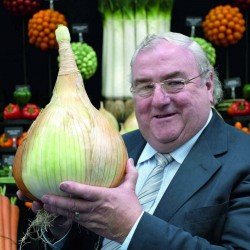
The Kelsae Giant Onion Seeds
Price
€3.00
SKU: MHS 147
Seeds Gallery Com,
5/
5
<!DOCTYPE html>
<html>
<head>
<meta http-equiv="Content-Type" content="text/html; charset=UTF-8" />
</head>
<body>
<h2><strong>The Kelsae Giant Onion Seeds</strong></h2>
<h2><span style="color: #ff0000;"><strong><span style="color: #ff0000;">Price for Package of 8 or 15 seeds.</span><br /></strong></span></h2>
<div>110 days. Allium cepa. Plant produces giant 4kg sweet white onion. The Kelsae Sweet Giant Onion holds the Guinness World Record for the Largest Onion in the World at at nearly 15 lb 5.5 oz and 33 inches diameter! It has a unique mild sweet flavor. Impress your neighbors and try growing a World Record size onion. Long day variety suitable for Northern regions.</div>
</body>
</html>
MHS 147 (15 S)


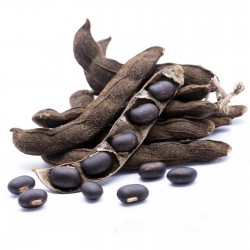
Velvet Bean Seeds (Mucuna...
Price
€2.85
SKU: P 88 MP
Seeds Gallery Com,
5/
5
<h2 class=""><strong>Velvet Bean Seeds (Mucuna pruriens)</strong></h2>
<h2><span style="color: #ff0000;"><strong>Price for Package of 5 seeds.</strong></span></h2>
<p><i><b>We have in offer Mucuna pruriens with white and black seeds. Choose under the color option seeds color.</b></i></p>
<p><i><b>Mucuna pruriens</b></i><span> is a tropical </span>legume<span> native to Africa and tropical Asia and widely naturalized and cultivated.</span><sup id="cite_ref-GRIN_2-0" class="reference"></sup><span> Its English </span>common names<span> include </span><b>monkey tamarind</b><span>, </span><b>velvet bean</b><span>, </span><b>Bengal velvet bean</b><span>, </span><b>Florida velvet bean</b><span>, </span><b>Mauritius velvet bean</b><span>, </span><b>Yokohama velvet bean</b><span>, </span><b>cowage</b><span>, </span><b>cowitch</b><span>, </span><b>lacuna bean</b><span>, and </span><b>Lyon bean</b><span>.</span><sup id="cite_ref-GRIN_2-1" class="reference">[2]</sup><span> The plant is notorious for the extreme itchiness it produces on contact,</span><sup id="cite_ref-ReferenceA_3-0" class="reference"></sup><span> particularly with the young foliage and the seed pods. It has agricultural and horticultural value and is used in </span>herbalism<span>.</span></p>
<p>The plant is an annual climbing shrub with long vines that can reach over 15 metres (50 ft) in length. When the plant is young, it is almost completely covered with fuzzy hairs, but when older, it is almost completely free of hairs. The leaves are tripinnate, ovate, reverse ovate,<span> </span>rhombus-shaped or widely ovate. The sides of the leaves are often heavily grooved and the tips are pointy. In young<span> </span><i>M. pruriens</i><span> </span>plants, both sides of the leaves have hairs. The stems of the leaflets are two to three millimeters long (approximately one tenth of an inch). Additional adjacent leaves are present and are about 5 millimetres (0.2 in) long.</p>
<p>The flower heads take the form of axially arrayed<span> </span>panicles. They are 15–32 centimetres (6–13 in) long and have two or three, or many flowers. The accompanying leaves are about 12.5 millimetres (0.5 in) long, the flower stand axes are from 2.5–5 millimetres (0.1–0.2 in). The bell is 7.5–9 millimetres (0.3–0.4 in) long and silky. The<span> </span>sepals<span> </span>are longer or of the same length as the shuttles. The crown is purplish or white. The flag is 1.5 millimetres (0.06 in) long. The wings are 2.5–3.8 centimetres (1.0–1.5 in) long.</p>
<p>In the fruit-ripening stage, a 4–13 centimetres (2–5 in) long, 1–2 centimetres (0.4–0.8 in) wide, unwinged, leguminous fruit develops. There is a ridge along the length of the fruit. The husk is very hairy and carries up to seven seeds. The seeds are flattened uniform ellipsoids, 1–1.9 centimetres (0.4–0.7 in) long, .8–1.3 centimetres (0.3–0.5 in) wide and 4–6.5 centimetres (2–3 in) thick. The<span> </span><i>hilum</i>, the base of the<span> </span><i>funiculus</i><span> </span>(connection between placenta and plant seeds) is a surrounded by a significant<span> </span><i>arillus</i><span> </span>(fleshy seed shell).</p>
<p><i>M.pruriens</i><span> </span>bears white, lavender, or purple<span> </span>flowers. Its seed pods are about 10 cm (4 inches) long<sup id="cite_ref-Rätsch_4-0" class="reference">[4]</sup><span> </span>and are covered in loose, orange hairs that cause a severe itch if they come in contact with skin. The itch is caused by a protein known as<span> </span>mucunain.<sup id="cite_ref-Reddy_5-0" class="reference">[5]</sup><span> </span>The seeds are shiny black or brown<span> </span>drift seeds.</p>
<p>The dry weight of the seeds is 55–85 grams (2–3 oz)/100 seeds.</p>
<h2><span class="mw-headline" id="Uses">Uses</span></h2>
<p>In many parts of the world,<span> </span><i>Mucuna pruriens</i><span> </span>is used as an important<span> </span>forage,<span> </span>fallow<span> </span>and<span> </span>green manure<span> </span>crop.<span> </span>Since the plant is a<span> </span>legume, it<span> </span>fixes nitrogen<span> </span>and fertilizes soil. In<span> </span>Indonesia, particularly<span> </span>Java, the beans are eaten and widely known as 'Benguk'. The beans can also be fermented to form a food similar to<span> </span>tempe<span> </span>and known as<span> </span>Benguk tempe<span> </span>or 'tempe Benguk'.</p>
<p><i>M. pruriens</i><span> </span>is a widespread fodder plant in the tropics. To that end, the whole plant is fed to animals as<span> </span>silage, dried hay or dried seeds.<span> </span><i>M. pruriens</i><span> </span>silage contains 11-23% crude protein, 35-40% crude fiber, and the dried beans 20-35% crude protein. It also has use in the countries of<span> </span>Benin<span> </span>and<span> </span>Vietnam<span> </span>as a biological control for problematic<span> </span><i>Imperata cylindrica</i><span> </span>grass.<sup id="cite_ref-tropical_7-1" class="reference">[7]</sup><span> </span><i>M. pruriens</i><span> </span>is said to not be invasive outside its cultivated area.<sup id="cite_ref-tropical_7-2" class="reference">[7]</sup><span> </span>However, the plant is invasive within conservation areas of South Florida, where it frequently invades disturbed land and<span> </span>rockland hammock<span> </span>edge habitats. Cooked fresh shoots or beans can also be eaten. The plant contains relatively high (3–7% dry weight) levels of<span> </span>L-DOPA; some people are sensitive to L-DOPA and may experience nausea, vomiting, cramping, arrhythmias, and hypotension. Up to 88% of the L-DOPA can be extracted from<span> </span><i>M. pruriens</i><span> </span>by boiling and soaking for approximately 48 hours. The efficiency of the process can be slightly improved by using approximately 0.25-0.50% sodium bicarbonate.<sup id="cite_ref-8" class="reference">[8]</sup></p>
<h3><span class="mw-headline" id="Traditional_medicine">Traditional medicine</span></h3>
<p>The seeds of<span> </span><i>Mucuna pruriens</i><span> </span>have been used for treating many dysfunctions in Tibb-e-Unani (Unani Medicine).<sup id="cite_ref-Amin_9-0" class="reference">[9]</sup><span> </span>It is also used in<span> </span>Ayurvedic medicine.</p>
<p>The plant and its extracts have been long used in tribal communities as a toxin antagonist for various snakebites. It has been studied for its effects against bites by<span> </span><i>Naja</i><span> </span>spp. (cobra),<sup id="cite_ref-10" class="reference">[10]</sup><span> </span><i>Echis</i><span> </span>(Saw scaled viper),<sup id="cite_ref-11" class="reference">[11]</sup><span> </span><i>Calloselasma</i><span> </span>(Malayan Pit viper) and<span> </span><i>Bangarus</i><span> </span>(Krait).<sup class="noprint Inline-Template Template-Fact">[<i><span title="This claim needs references to reliable sources. (November 2019)">citation needed</span></i>]</sup></p>
<p>It has long been used in traditional<span> </span>Ayurvedic<span> </span>Indian medicine in an attempt to treat diseases including<span> </span>Parkinson's disease.<sup id="cite_ref-DoubleBlind_12-0" class="reference">[12]</sup><span> </span>It has been investigated in low income regions of the world as an alternative treatment for Parkinson's disease due to its high content of<span> </span>L-dopa.<sup id="cite_ref-13" class="reference">[13]</sup><span> </span>Mucuna prurien seeds have been recognized for their ability to significantly alleviate neurotoxocity induced by Parkinson's disease.<sup id="cite_ref-14" class="reference">[14]</sup></p>
<p>Dried leaves of<span> </span><i>M. pruriens</i><span> </span>are sometimes smoked.<sup id="cite_ref-Rätsch_4-1" class="reference">[4]</sup></p>
<h2><span class="mw-headline" id="Itch-inducing_properties">Itch-inducing properties</span></h2>
<p>The hairs lining the seed pods contain<span> </span>serotonin<span> </span>and the protein<span> </span>mucunain<span> </span>which cause severe<span> </span>itching<span> </span>when the pods are touched.<sup id="cite_ref-ReferenceA_3-1" class="reference"></sup><sup id="cite_ref-toxicology_15-0" class="reference"></sup><sup id="cite_ref-16" class="reference"></sup><span> </span>The calyx below the flowers is also a source of itchy spicules and the stinging hairs on the outside of the seed pods are used in some brands of<span> </span>itching powder.<sup id="cite_ref-ReferenceA_3-2" class="reference">[3]</sup><sup id="cite_ref-joglekar_17-0" class="reference">[17]</sup><span> </span>Scratching the exposed area can spread the itching to other areas touched. Once this happens, the subject tends to scratch vigorously and uncontrollably and for this reason the local populace in northern Mozambique refer to the beans as "mad beans" (<i>feijões malucos</i>). The seed pods are known as "Devil Beans" in Nigeria.<sup id="cite_ref-18" class="reference"></sup></p>
<h2><span class="mw-headline" id="Pharmacology">Pharmacology</span></h2>
<p>The seeds of the plant contain about 3.1–6.1%<span> </span>L-DOPA,<sup id="cite_ref-toxicology_15-1" class="reference"></sup><span> </span>with trace amounts of<span> </span>serotonin,<span> </span>nicotine, and<span> </span>bufotenine.<sup id="cite_ref-19" class="reference"></sup><span> </span>One study using 36 samples of seeds found no<span> </span>tryptamines<span> </span>present.<sup id="cite_ref-20" class="reference">[20]</sup><span> </span><i>M. pruriens</i><span> </span>var.<span> </span><i>pruriens</i><span> </span>has the highest content of L-dopa. An average of 52.11% degradation of L-dopa into damaging<span> </span>quinones<span> </span>and reactive oxygen species was found in seeds of<span> </span><i>M. pruriens</i><span> </span>varieties.</p>
<script src="//cdn.public.n1ed.com/G3OMDFLT/widgets.js"></script>
VE 178 B (5 S)

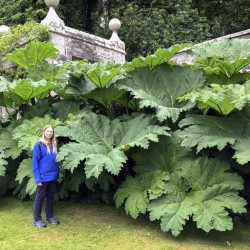
Giant Rhubarb Seeds...
Price
€1.95
SKU: UT 2
Seeds Gallery Com,
5/
5
<div id="idTab1" class="rte">
<h2><span style="font-size: 14pt;" class=""><strong>Giant Rhubarb - Seeds (Gunnera manicata)<br></strong></span></h2>
<h2><span style="color: #ff0000;"><strong><span style="font-size: 14pt;">Price for Package of 10 seeds.</span></strong></span></h2>
<div>Gunnera manicata syn. Gunnera brasiliensis is also known as giant rhubarb. It is a perennial herbaceous plant which is native to the mountains of Brasil and Colombia. Giant gunneras are huge ornamental plants that need a lot of space, which are fitted for big gardens with damps areas or ponds. The leaves usually die back in winter, but the plant itself with survive lower temperatures, down to about 14°F (-10°C) and even lower with some protection. This plant can thus be grown in USDA zones 8a and warmer, and could be tried in sheltered places in zones 7.</div>
<div>This plant has huge decidious leaves, that can be up to 8 ft (2,40 m) wide in its native area. Leaf stems are thorny, and can be up to 4 or 5 ft. (Up to 1,50 m) Gunnera manicata has tiny green-red flowers, which are grouped in erected inflorescences. These inflorescences bear both male and female flowers.</div>
<div>
<p>This plant bear tiny red-green fruits, which are about .1 in (2.5 mm) long.</p>
</div>
<div>Gunnera manicata requiert les expositions suivantes : ombre,mi-ombre,lumière</div>
<div>These plants thrive in damp bog conditions, in a moist and fertile soil.</div>
</div><script src="//cdn.public.n1ed.com/G3OMDFLT/widgets.js"></script>
UT 2





